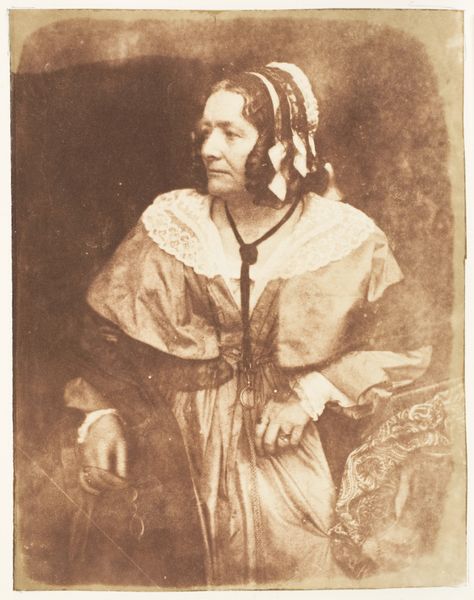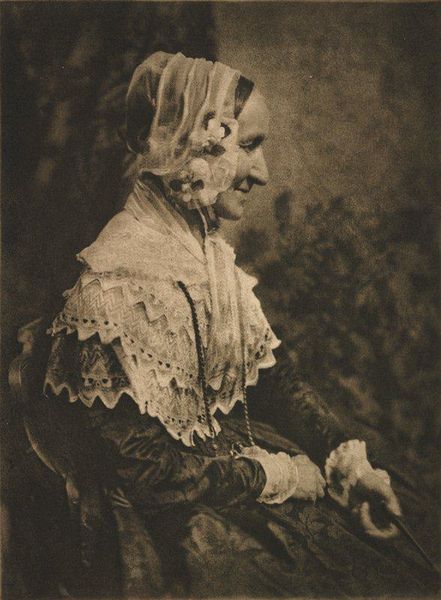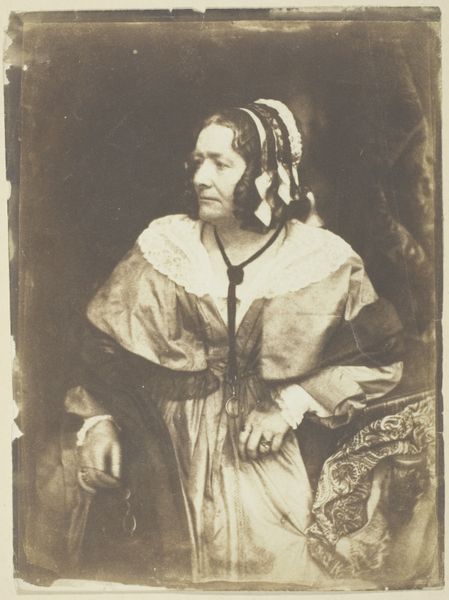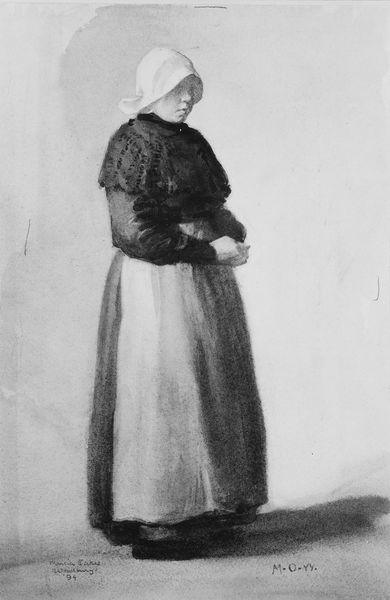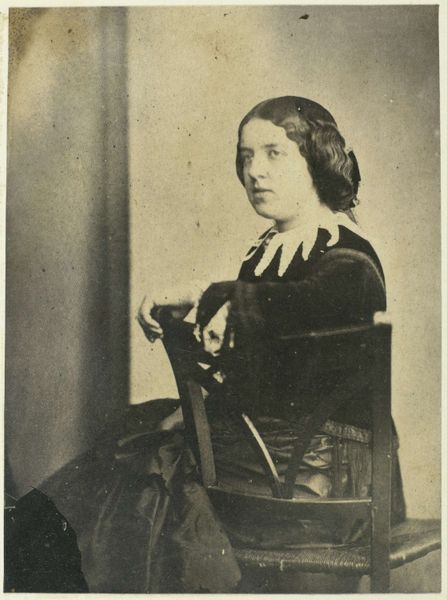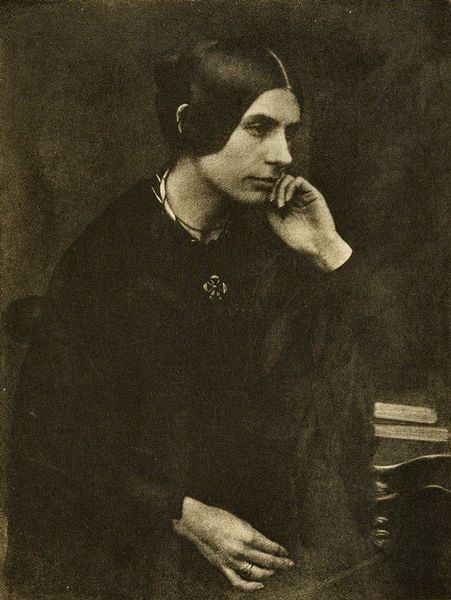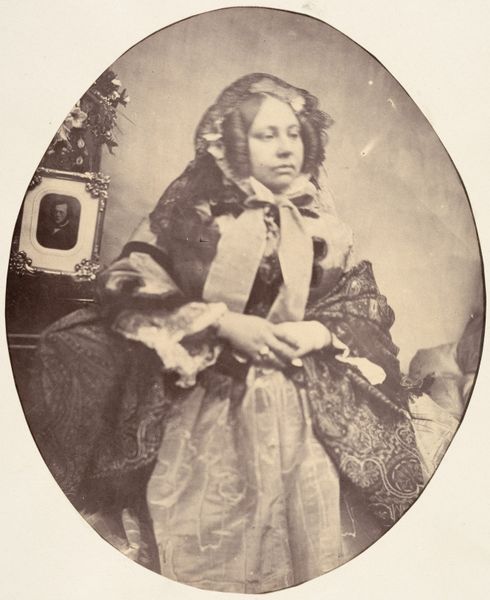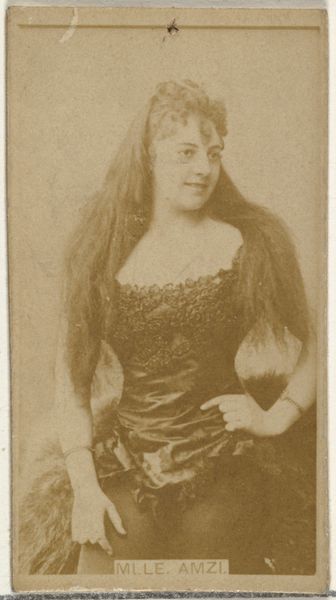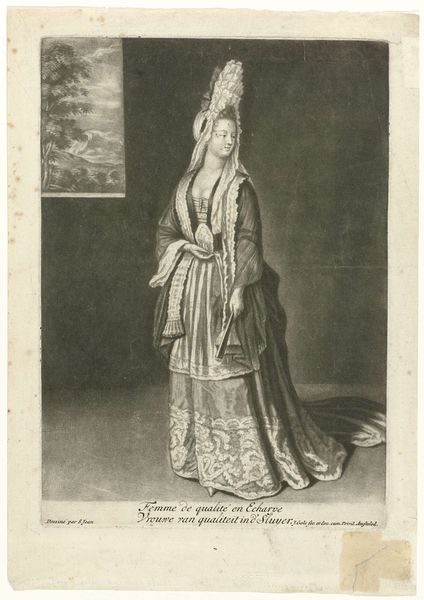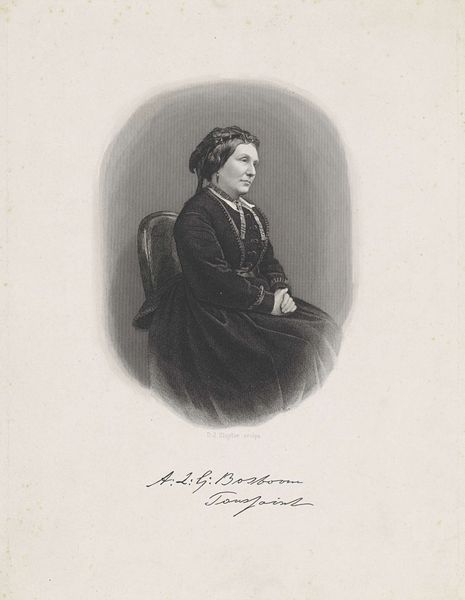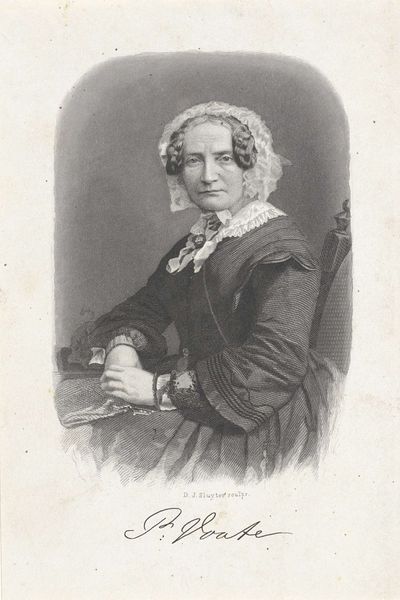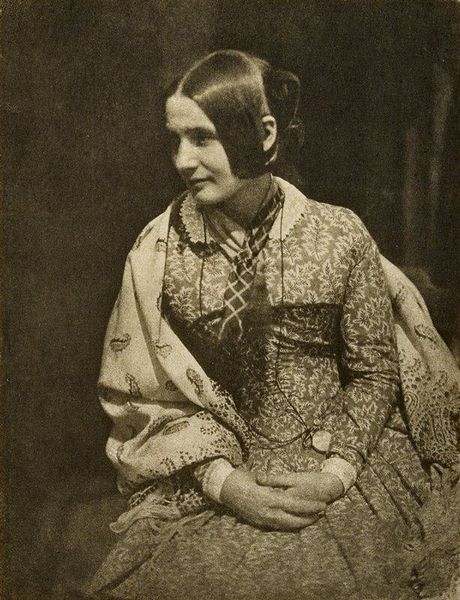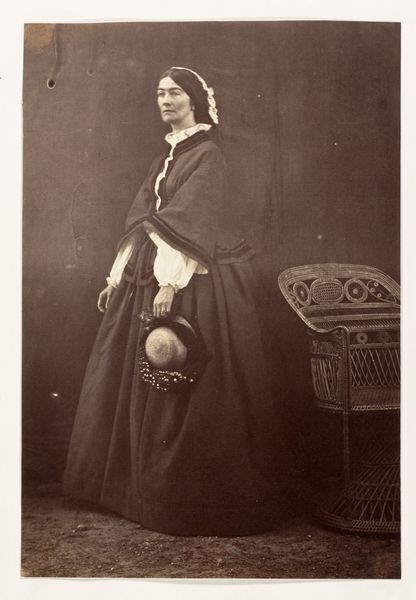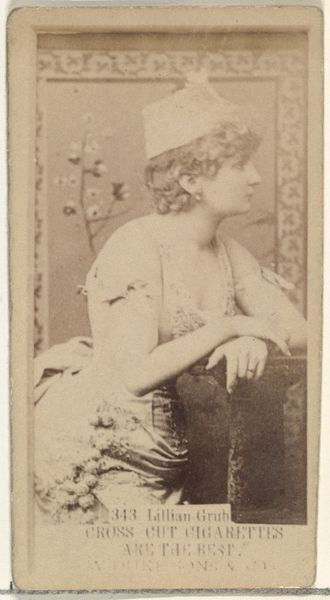
photogravure, photography, gelatin-silver-print
#
portrait
#
photogravure
#
photography
#
romanticism
#
gelatin-silver-print
Dimensions: 8 x 5 3/4 in. (20.32 x 14.61 cm) (image)
Copyright: No Copyright - United States
Curator: Let's turn our attention to a photogravure from around the 19th century, currently housed here at the Minneapolis Institute of Art. This is David Octavius Hill's portrait of Mrs. Anna Brownell Jameson. Editor: My initial impression is one of delicate solemnity. The subdued tonality emphasizes the subject’s contemplative gaze and the detailed textures of her clothing. It’s a very composed and intimate portrait. Curator: Indeed. This particular print exemplifies the transition from earlier photographic processes toward mass reproduction. Photogravure allowed for richer tonal ranges than previous methods, enabling wider distribution of images and shaping visual culture in the late 19th century. Hill and his colleague Robert Adamson utilized early photography to document Scottish society. The labor involved, especially the etching process onto copper plates, significantly contributed to photography's elevation as an art form. Editor: From a formal standpoint, the arrangement is crucial to the mood. Observe the gentle gradations of light across Mrs. Jameson's face, the carefully positioned hands, and the contrasting textures of the lace and darker fabrics. Semiotically, her gaze directs the viewer’s eye to a realm beyond the immediate, hinting at intellectual depth. The slight asymmetry in her posture introduces a subtle tension. Curator: Hill’s partnership with Adamson blurred lines between art, documentation, and commerce. Consider that Mrs. Jameson was a prominent art critic and writer herself, further adding to the complexities of the visual representations produced during this period. The accessibility afforded by the photogravure shaped contemporary understanding of prominent figures, offering more people access to her likeness and, in turn, perhaps even her ideas. Editor: Agreed. This portrait is visually arresting. By utilizing compositional strategies to focus our attention, it communicates much about the persona Mrs. Jameson conveyed to the world. The light, tone, and balance achieved by Hill invite the viewer to connect intimately with Mrs. Jameson. Curator: Precisely, analyzing prints and their dissemination reveals how early photographic methods shaped culture, creating narratives around historical figures like Jameson, whose influence on art appreciation deserves deeper acknowledgement. Editor: Indeed. A careful combination of stylistic restraint and controlled technique serves to encapsulate this person—the artwork captures both their personality and period simultaneously.
Comments
No comments
Be the first to comment and join the conversation on the ultimate creative platform.
